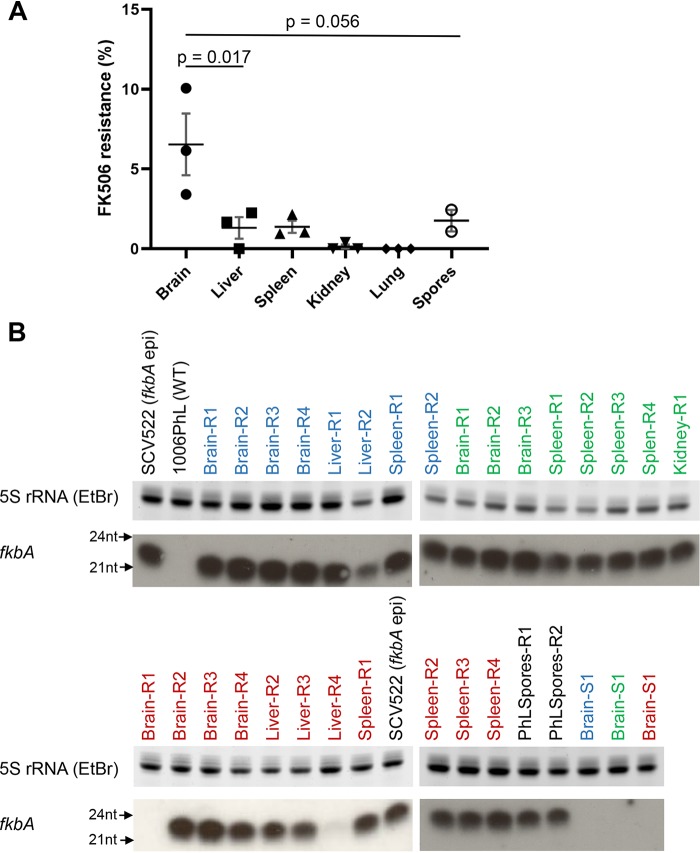FIG 3.
Organ-specific development of FK506 resistance after in vivo passage. Mice (N = 3) were infected with the wild-type 1006PhL strain; colonies were recovered on YPD + FK506 medium when mice were moribund, 4 days postinfection. Five days after recovery, resistant and sensitive colonies were counted. (A) Percentage of FK506 resistance by organ, showing higher rates of resistance in the brain. 1006Phl spores from strains without in vivo passage were plated and are shown in the graph. Significance was determined via one-way ANOVA (P = 0.0035) with posthoc Tukey’s multiple-comparison test. (B) sRNA hybridization analysis against fkbA demonstrated the development of sRNA expression against fkbA in strains from all organs and spore conditions. SCV522 is the fkbA epimutant. 1006PhL is the wild-type strain. Strains isolated from each individual mouse are identified by the color of the label (blue, green, or red). Two of the 27 resistant (R) strains and all three of the sensitive (S) strains (one from each mouse) showed no evidence of sRNA expression against fkbA.

